The Ministry of Defence want to replace current “obsolete and incapable” training simulators and replace them with ones able to reflect changes made during the Type 45’s power improvement programme.
According to a ‘Prior Information Notice’ issued by the Ministry of Defence to notify industry of an upcoming contract:
“The Authority intends to run a competition to design a Training Simulator to enable training of Royal Navy Engineers assigned to Type 45 Destroyers.
The current Simulation solution is outdated, obsolete and incapable of supporting the new requirements from the Napier power improvement programme. The requirement is to design a training simulator to train personnel on the use of the Platform Management System (PMS) integral to the T45.
The competition is for procurement of a solution only. When procurement is complete, the enduring maintenance of the Training Simulator will be managed by another Department.”
The Ministry of Defence say that they intend to issue a contract notice by the end of November/Early December 2021.
What is Project Napier?
In 2015, the Ministry of Defence acknowledged that the vessels propulsion system, specifically, the Northrup Grumman intercooler was experiencing reliability issues, previously reported as nothing more than “teething troubles”.
A staggered refit was also announced, which will involve cutting into the ships’ hulls and fitting additional diesel generation capacity, this has become known as Project Napier.
According to the Royal Institute of Naval Architects:
“Project Napier was established in 2014 with two core work strands. The first of these, known as the Equipment Improvement Plan (EIP), is continuing efforts to enhance system reliability and to meet the original design intent in the near term. The second component of Project Napier is a longer term Power Improvement Plan (PIP), intended to improve overall system resilience by adding upgraded diesel generators to provide the electrical generation capacity required to meet the overwhelming majority of propulsion and ship power requirements without reliance on WR-21.”
Project Napier will cost £280 million.
The reliability issues with the intercooler lead to occasional near-complete power generation failures, temporarily disabling not only propulsion, but power generation for weapons, navigational systems, and other purposes, leaving the ships vulnerable to “total electric failure”.
The Ministry of Defence have confirmed that all Type 45 Destroyers will have received upgrades to their power systems by the mid-2020s, you can read more about that here.


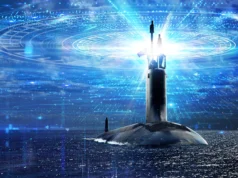
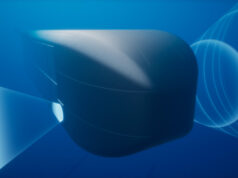
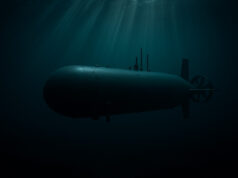

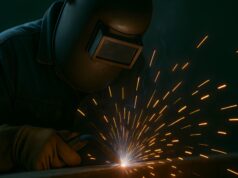

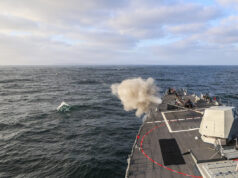
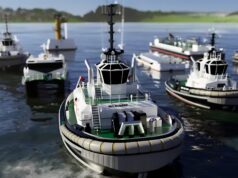
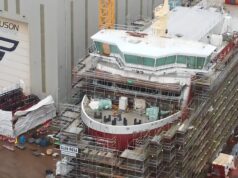
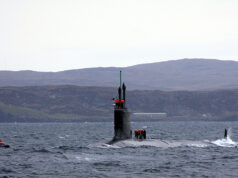

Are we sure the Type 26 and 31’s have the right engines? I’m sure this was a one off ‘B***’s up, and I hope a sober reminder that the crews of these ships deserve better.
T31 are proven design 4 MTU diesels.
Type 26 has MT30, dervived from the RR Trent – already in service on QEs,US Freedom class Littoral Combat Ships and Zumwalt destroyer and well as with the Italian (Trieste) Japanese (Mogamis) and Korean (Daegus) navies.
Its a shame the timelines of Type 45 design and construction and MT 30 availability didn’t match up – if they had MT 30 they would be nigh on perfect,and there would have been fewer discussions on here about it 😀😎
To be fair, the pair of intercooled-recuperated WR-21 was a better fit for the T45 design, and has benefits in terms of efficiency and reduced IR signature, especially when compared with the likely alternative at the time – the LM2500.
The trouble is that, at least as far as the non-RR parts are concerned, it didn’t perform to spec. Had it done so, we wouldn’t be having this discussion.
The T-26’s have the same GTA as the carriers and other than QE blowing through some ducting on the west coast of the States I’ve not heard any mention of other reliability issues with them.
The T-31… Do they even have a Gas Turbine. Someone else might be more definitive but so far I only see mention of diesel generator sets. Those look to be the same as on the QE class as well made by RR/MTU
Type 31 is Diesel only, CODAD i think is the correct term.
Type 31 has four 8mw MTU diesels driving two shafts in a CODAD (combined diesel and diesel) arrangement with variable pitch props, and four additional 1mw MTU generators. CODAD means it can cruise or sprint on its diesels. Power is uplifted from the Iver Huifeld, which only has the four 8mw diesels, presumably to allow more electrical systems growth.
Marine diesels have come a long way from the 1960s when GTs were first introduced – these ships can make 30 knots.
Type 26 has a CODLOG (combined diesel-electric or gas) powertrain and also has four 3mw MTU generators alongside the MT30 which can generate an impressive 40mw. CODLOG gives the option of either cruising or running quiet for ASW on DE or going fast on GT.
Type 45 has a very fancy IEP integrated eletrical propulsion system (an onboard power station) driving two 20mw electric motors, power comes from two WR21s, rated at 21mw each, and two Wartsila 2mw generators. The PIP will replace the latter with three 4mw MTU generators. All power down the shafts is electric.
Type 23 also has a fancy CODLAG (combined diesel-electric and gas) powertrain with 2 RR Speys (12mw each) and four 1.7mw MTU diesels (after LIFEX) driving two 3mw electric motors. CODLAG can cruise or run quiet on DE and then ‘top up’ with GTA to sprint.
The difference between Type 26 and Type 23 is that the latter can drive from both the gas turbines and diesel electric power simultaneously, while the former choses one or the other.
It terms of power generated:
Type 26 = 52mw – of which up to 40mw can drive the ship
Type 45 = 46mw – (54mw after PIP) of which 40mw can drive ship
Type 31 = 36mw – of which 32mw can drive the ship
Type 23 = 30mw – of which all 30mw can drive ship if needed.
Seems T26 could be ‘significantly’ in excess of 26 knots, then. But appreciate the hotel loads are what extends sensor and weapon flexibility, though.
Yes MOD always understates performance in public statements. They will be 30 knot + vessels.
T23 can shift the electrical power around automatically to where its needed. If you have a high hotel load and then also need propulsion the “shedables” drop off so things like 240v power , 50% lighting can drop off until more generators come on line.
Excellent.
Rather as you would hope it would work in a rational design.
Like the human circulatory system the essentials get priority!
Although I would guess with LED lighting retrofitted (guess) that it would reduce the utility of a 50% lighting regime. I could also see how that would reduce the chilled water system loading too.
QEC also have full IEP – with lessons learned baked in.
I think the Albions are also IEP?
So it isn’t like IEP can’t work properly.
The issue with T45 was more the very steep cliff edge between working fine and thermal runaway to failure. Which left little time for active load shedding.
Most of the work around(s) were, apparently, in the software to shed hotel load and limit speed/power in certain thermal regimes. Hence why there have been massively reduced instances of power failure.
What happened with T45 on CSG21 was the full failure of a turbine and not the recuperator or allied system. This is not something that is unknown. I recall that HMS Bristol lost an Olympus turbine and was sailing around for ages without one active?
There is a T26 engine set in action in one of the LEP T23’s.
So it will be well test IRL.
It one of the lessons learned.
I am, (not) surprised, that nobody shut up one of the ill informed idiot MP on the Defence Select Committee with that one simple fact.
Because it’s not true?
“In addition to PGMU and PIP, very similar DG sets are also being fitted to the T26 Frigates. The occurrence of three RN platforms using modern DG sets from the same family marks a turning point for the Royal Navy, where it has moved firmly into the 21st century with regards to diesel electric power generation, and the changes in operating and maintenance procedures that this brings with it.”
https://www.researchgate.net/publication/335659443_T23_Frigate_Power_Generation_and_Machinery_Controls_Update_PGMU_-_Let_the_trials_commence
https://ukdefencejournal.org.uk/hms-richmond-emerges-from-refit-as-most-advanced-frigate/
HMS Richmond has the diesel generator/engine setup the T26s are due to have. Slightly dodgy source admittedly 🤣
It has taken far far to long to sort this major issue out. Should have retained a few T42’s whilst the T45’s were sorted. Great weapons system but power? Rubbish and not happy ships really either as very poorly but together. Role on the replacement which will I hope WORK when wanted.
Keeping some Type 42’s in service longer would have been a waste of time and money i think – Sea Dart was basically OOS so apart from the 4.5,Phalanx and 30mm they couldn’t contribute much to any tasking.
They cancelled the improved Sea Dart. Even then, it wouldn’t have been as capability as the Aster missile is! From what I remember the Type 909 had a minor update and then was going to be updated with a new antenna and pre-amp to boost range.
But a ship at sea is better than not and T45’s have been more alongside in Portsmouth than any other class in recent times. T42’s were still in good condition and all systems still worked, Seadart like harpoon could have been extended if required. The T45’s power issue should have been sorted years ago not half way through the class’ life. T45 weapons as said are the tops in Air Defence but contributed little else as no sonar and when they have no power then they contribute nothing to defence. Served on a couple T45’s and T42’s too and I know what most preferred. At last they may get some sea time and but this trip out East has showed their weakness still. Role on the next class which I hope they will get right all round. Our Crews deserve the best and most reliable. Loosing all power at sea is a very dangerous time even in peace time, unforgivable in times of tension/War.
Defender seems to have done ok? Also, not sure Diamond’s issues are related to PIP unless you know different?
Good point Angus , I doubt any T45 on fountain lake Jetty could engage any Threat should of kept a Couple of Batch 2 T42s going .At least those old girls could carry out the 3 key points of a Warship Float,Fight,Move T45s seem too only manage 2out of 3 occasionally 1 out of 3 .Could the Navy say wholeheartedly that T45s could manage 3 out of 3 100% of the time ?
Post 2010 the RN was caught between a rock and a hard place. Not enough money for crewing or maintenance – the only way to get that was to loose more ships, which after the disasterous 2010 SDSR they sucessfully resisted. The RN introduced a new crewing model (iniitally on Montrose and then the OPVs) to maintain ships on station, and retained the Batch 1 OPVs.
As 2SL Radakin reorganised and rationalised a lot of shore jobs and cut a few admirals (and the support coy from 40 cdo) to address crewing. He also acellerated the departure of the oldest two GP Type 23s and the MCMVs (as 1SL) to find more crews for POW and the Type 45s tied up alongside. There are now 3 Type 45s active and 3 in refit/ scheduled maintenance, its due to increase to 4 Active and 2 in refit/maintenance by 2024.
Wallace demanded more ship availability and provided the money for that, and a lot of work has gone on recently to clear the maintenance backlog, although COVID has not helped. This is easier now as most of the Type 23s have or are completing LIFEX. I think there are now 7 active and 5 in refit/scheduled maintenance (although Montrose will be paid off when those in maintenance drops to 4).
First-of-type is always difficult to predicd, so I imagine the first PIP is both slow because CL and RR are learning how to do it most efficiently, a lot of testing is needed and COVID affected workforce availability.
The carriers have IEP too, and its pretty common on cruise liners. There must be a way to get it right, so it does not automatically shut down if one of the turbines fails? I imagine a lot is software as well as making sure there is a larger margin of back up diesel generated power if one WR21 goes. Unfortunately, the WR21 will always be problematic until they are replaced so they will need to be overpowered to nurse those engines.
This is not new – some ship designs don’t work out as planned. The battleships Rodney and Nelson had terrible engines and by 1941 could barely make 18 knots compared to their designed 23 knots, and were too lightly built to sustain fire from their 16″ guns without damaging themselves. Nevertheless both served gallantly in WW2.
Yep that was in the era of Washington Naval treaty. They tried to fit too much into too little displacement.
Sorry I replied to you on the above thread!
My bad.
We’re going to put T31s to see with almost as little..12 Sea Ceptors and an air pistol…
Really, really, really T42 could not have been extended.
They cost fortunes to run, huge crew and very fuel inefficient.
The Sea Dart computer system was getting impossible to maintain as it was ancient. Nobody was around who designed the thing.
You would have been better off relying on Sea Ceptor than Sea Dart in terms of real world performance. Aster is in another league altogether never mind with Sampson.
That’s not what the crews informed us at the time of decommissioning as hulls and machinery were still working. Aster is good but no good if the hull its in is not at sea is it. Both France and Italy used a modded well known power plant on their hulls with no such issues. Cost to run, well what does not cost to run. T42’s were very reliable with many of the hulls doing back to back trips without issues, can’t say that about T45’s. It;s no fun going from 30 knots to zero because you have no power and of course without power you can’t even fight a fire onboard either. Should have build them with a tried and tested power plant then and saved a lot of money on a system no one wanted.
Errr… What?
T42s where knackered. They where cash cows eating FTSP cash for fun.
Accom was rubbish… Unless as a PO you liked living in a mess 3 bunks high with 20 plus other people, When everyone else has 6 berth cabins in the Fleet.
Fire fighting… So no emergency fire pump then…Carp… No Desmi’s?
Everyone else has TLFs… T23 and LPDs especially…you learn to work around it and carry on keeping the ship going.
(Former NBCDQ by the way…)
Where was it the last time they remember having it?
😂
I think RR have got this one. There’s youtube videos of just such devices they’ve got running already so given they’re somewhat in the power business this would look like a job right up their street.
What do people think the cause of the T45s problems are – poor relationships between the RN and Contractor, multinational design, shoddy workmanship, inexperience….
None of those. WR21 is an experimental design, it was also insufficiently bench tested. BAe advised MOD not to go with it, as too high risk, but the then Defence Secretary Geoff Hoon overuled the advice, as it seemed to offer some benefits in terms of fuel consumption and reduced emissions.
The Power Improvment Programme has moved slowly, but presumably because of the usual first-in-class issues. Cammel Laird and Rolls Royce will be learning how to get it right with Dauntless (now on trials after PIP). Presumably they will have ironed out the installation process for the next set of upgrades.
I think many here consider such as programme as a quick fix, however cutting holes in ships and removing two diesel generators and squuezing in three much bigger ones is not a piece of cake – and a lot of testing will be needed to ensure the upgrade is working as designed.
There’s two distinct problems with the T45’s. Firstly that the WR21’s are unreliable as you state.
Secondly, the propulsion/generation system could not handle losing a WR21 without closing down the whole ship’s electrical systems.
One fault triggered the other.
By the way Hoon didn’t chose WR21 because of reduce fuel consumption, he chose it in order to preserve Labour votes in Rugby because its competitor was an American GT.
Thanks for the correction – I overstated that point.
Dauntless isn’t out doing any trials she is still stuck in Cammels basin with very little activity going on. Whilst Daring has been in the dry dock for 2 months now with zero happening. So there appears to be very little urgency in the program!
By the time all this intercooler fiasco has run its coarse T45s will be just in time for King Williams silver jubilee Spithead review then back to Fountain lake Jetty
So what is going on?
It is know that the PIP was supposed to last 6 months and there is already more than a year.
When brewing up for a Cuppa the Kettle keeps tripping the electrics probably that’s my excuse and I’m sticking too it Alex
How long has Dauntless been back afloat?
“BAe advised MOD not to go with it”
Not this all over again NO JUST NO! BAe did not advise the MOD not to go with the WR21! That is simply not true! BAe did a risk study of both propulsion solutions and advised both the WR21 based solution and the GE2500 based solution could meet the performance, fuel consumption and range requirements for Type 45. The study stated that the WR21 based solution had greater risk only.
It would have been a brave defence secretary at the time to go against the home solution especially when it directly affected manufacturers based in their own constituency. Also RR were threatening to get out of the Marine propulsion business if it didn’t go there way, ironically MT30 would never of happened if WR21 had not been purchased…dwell upon that!
I also remember the back slapping and general happiness within the UK defence commentary sphere at the time that the RR solution had been chosen…the selective memories over that these days are frankly getting tiresome!
Thanks for the correction – noted.
Yup, but in political speak “greater risk” = “courageous decision” = “don’t go there”
BAe are not stupid so they made it clear enough to get them off the contractual hook without preventing the minister from doing what he was always going to do.
Geoff Hoone was the problem the nearest he got too the Navy was a tot of Pussers Rum in the Commons Bar
Known to everyone as Geoff Who !
Just thank the Lord the Defence Secretary wasn’t Baron David Blunkett then it would have been a case of the Blind leading the MOD (blind) sorry for not being PC Favid
LOL
Geoff Buffoon was his usual name 😛
Whatever happened to him ! Oh never mind no one cares. LOL
Just putting this forward as a possibility, but why keep throwing good money after bad. One idea would be to see if we could use the T31 hull with a batch 2 as a AA platform as a temporary replacement for the T45s until the T82’s come into service, Yes we will only get half the service life out of the T45 hulls but we will shut down this quit embarrassing sager in the RNs illustrious history.
Had a discussion with a CL employee yesterday. Dauntless has not yet left the yard for sea trials!
Type 82 ? Bristol was the one and only .And she’s just gone Steve
Type 83
Fedaykin Type 83 at the rate we’re going after COP 26 the Navy will either be Solar powered or back under Sail thanks Greta
Yes, the Arrowhead model at DSEI seems to show the possibility of the T31 handling heavier range of radars and a much bigger VLS load. If would be good to get some visuals of possible “lite” AAW T31, even on the T26 hull. They could likely build two new AAW ships before the PIP concludes. A 8 AAW fleet would be healthier.
It Just that these PIP up-grades are taking so long and are now keeping up in price.
Because what you suggest is a waste of money. The Type 45, is generally regarded as the best air-defence destroyer afloat. It’s only issue is the crap intercooler, which they are replacing. The money spent on fixing the T45s is a fraction of what you’d spend on an inferior cobbled together replacement.
You appear to want to throw away all that’s good to bodge something together based on a T31… Something that Heath Robinson would undoubtedly have even more issues – the most obvious being lower mounted radar resulting in less-range. Not to mention where to accommodate all the missiles that the larger T45 has space for.
Hello Sean, The Heath Robinson element comes in when you keep trying to repair something that dose not work. I agree with you that the T45’s would be an excellent bit of kit “If” they worked but they do not.
And that doesn’t describe the T45.
They known what the problem is – the intercooler.
They known what the fix is – stick in a couple more diesels, which they can because the T45 was built with lots of room for extra kit.
Should all be fixed by mid 2920’s – it’s nearly 2022.
So that it no way describes your “good money after bad” situation.
If you owned a convertible Ferrar and the roof kept getting stuck on opening, you would you get the get the roof fixed. You wouldn’t scrap it and replace it with a Fiat Panda and then try to soup it up to have similar performance 😂
If I had a new car and it was faulty I would send it back, the RN was forced to accept into service the T45’s knowing they were faulty by the MoD.
The PIP program is proceeding at a snails pace this might be because they are taking out 2 diesel generators and putting back 3 so have to move other kit around as well so a simple fix ends up being yet anouther bodge-up.
Good luck sending a car back after it’s warranty period.
Nobody forced the RN to accept the T45 into service, it passed the trials. Had some politician tried to ‘force’ the RN then it would have been leaked all over the newspapers. So don’t add conspiracy theories to you your lack of knowledge.
The ‘snails pace’ will be completed around the middle of the decade. It’s the end if 2021 and there’s 6 ships to do, do the maths…
Whereas you plan to take the budget £250m T31s and bodge together a replacement air-defence ship using odds and ends would be around for at least another decade… and would still be far inferior to the £10bn T45s. 🤦♂️
The faulty engines were documented before HMS Daring was lunched (lead ship) and was seen to be even worse than suspected on her trials but the MoD insisted that the class would be completed with the faulty engines instead of rectifying the rest of the class while still on the slips and look for a remedy once the class was in service. We are now half way through the service life of the Batch 1s (Daring,Dauntless,Diamond) we have just witnessed the sterling performance of HMS Defender but on the flip side HMS Diamond was a big embarrassment for what should have been a showboat for the UK CSG. She has spent most of the deployment alongside (as have the rest of the class over there short history)
If the PIP is going to work that would be fine but there are doubts in the system also why wait so long as Daring was accepted into service in 2009 so we have been sending people to sea in ships we now have a good probability of braking down. I just hope we are not involved in a Maritime confrontation anytime soon as if it can go wrong it will go wrong and when you run out of power under fire you had better have a good supply of body bags.
Like Kippling said ‘IF” is the middle word of “LIFE” Steve
Your right Tommo, and the governments favourite expressions are If, But and Maybe.
Like a School report “Could do Better” Steve
You goy it
👨🎓due too the PC brigade can’t find a Dunces cap emoji
They are not replacing the intercooler, it works ok, but in hot climates it can shut down and power from the WR21 can drop off catastrophically if the system is overloaded. It works the same as any intercooled system, but commerical systems don’t take the same level of stress as military systems. They are adding another 6mw of diesel generator capacity to ensure it is never so overloaded that the WR21 fails. What this means is that the T45 IEP needs a larger safety margin of power over expected demand than the T23s or new ships.
It is a bit more clumsy than that as far as I can make out. The 4 x gen sets that are going in are big enough for the whole ship to run on even if the GT goes offline. So essentially it allows the GT to be run down when it starts to get close to thermal runaway.
In fact in normal use the GT won’t even be fired up.
With the 4 x gensets GT won’t have to be hard loaded to run at 30kts.
It really is the rough and ready solution to take the GT out of the power zone where it is at risk.
The recuperator (not intercooler) is not being replaced in T45.
The power generation system is being augmented with the three existing diesel generators being removed and replaced with four more powerful units.
Just asking a question – would it be worthwhile testing a WR-21 in a Type 23 (as a test ship, for example the recently decommissioned HMS Monmouth)?
Off-topic I know, but a very very interesting read for most on UKDJ I think?
https://www.key.aero/article/team-tempest-takes-new-approach
Behind a paywall?
Sorry JohninMK, I don’t understand your point “Behind a paywall?”
When I link to it I see the first couple of paras then the message “Become a Premium Member to Read MoreThis is a premium article and requires an active Key.Aero subscription to view.” is displayed. This is known as a ‘paywall’.
I opted not to agree and can access it in full. I’ve done my best to sort out the paragraphs for you but it’s late!
14th April 2021
FEATURE
In this exclusive look behind the scenes of Britain’s new Future Combat Air System, Jon Lake gets under the skin of an aircraft due to enter service in just 14 years’ time, and yet its configuration is still undecided.
Tempest will be a ‘system of systems’ with a manned (or optionally manned) fighter aircraft at its heart – the final design, however, may differ substantially from the configuration featured in BAE Systems’ marketing effort
The Tempest name refers to a planned new fighter aircraft expected to sit at the heart of what will be a ‘system of systems’, consisting of crewed and uncrewed platforms, weapons, sensors and other force elements. That ‘system of systems’ is also called Tempest, and to add to the risk of confusion, the UK industry team working on this whole Future Combat Air System (FCAS) is known as Team Tempest.
The aerospace industry has long been somewhat platform-centric, based around the development and production of a particular aircraft type. In more recent times, those aircraft types have been ‘weapons systems’, and the sensors and fire control systems they carry have become progressively more important. Those systems are today at least as significant as the airframe and powerplant, but the aerospace industry has continued to focus on building individual platforms.
The product has always tended to be a standalone platform, albeit one equipped with important sensors, systems and weapons. By contrast, the new FCAS, rather than being a single standalone platform, will be a connected network of capabilities, hence a ‘system of systems’.
This new approach is required because air forces are facing a very complex and dangerous threat environment that is changing rapidly, and one that is proliferating around the world. Technology (and especially threat technology) is changing so rapidly that the framework of the new FCAS needs to be extremely adaptable, responsive and upgradable.
Leonardo’s director of major air programmes, Andrew Howard, told AIR International that “the future of air operations will not be about groups of individual aircraft flying individual missions in a warfighting posture. It will be about rapid and large-scale information exchange across a network of distributed capabilities, on an almost constant basis, within the air domain, and across all other domains, such as land, sea and space.
This ‘system of systems’ model underpins the Tempest concept and requires a completely new approach.”
Elements and categories
The core element is “likely to be a manned or optionally manned system but there will be a number of other systems or components that sit around it,” said Michael Christie, BAE Systems’ director of future combat air systems, and the company’s senior representative on Team Tempest. Christie defines these elements according to four broad categories. As well as the first, the core platform, there are what he calls adjuncts, a more generic term for the loyal wingman/remote carrier unmanned combat aerial vehicles (UCAVs) that will also be developed.
These could have a range of different capabilities, and could even fulfil different roles.
The third category refers to ‘effectors’, a term Team
Tempest prefers to ‘weapons’ because they may not deliver kinetic effects. The final category is command, control and communications.
A radical approach
The UK-led FCAS and the next-generation Tempest aircraft at its core are being developed in a radically new way, and this can make the programme difficult to understand and to follow. Judged by conventional metrics, the programme might appear to be lagging behind rival US and Franco-German-Spanish efforts to develop new-generation combat aircraft and combat air systems, for example, but to make that assumption would be a mistake.
Although Team Tempest is looking to produce a flexible, affordable combat aircraft that reaches the market in the 2030s, the team is in no rush to get an aircraft into the air or even to lock down the design.
Development of Tempest is proceeding apace, but there are few obvious milestones or markers of progress, since a key feature of the programme is that it is quite deliberately concentrating on developing and maturing the technologies and capabilities required. Platform development will be compressed and left until the last moment, thanks to extensive and indeed unparalleled use of model-based systems engineering and design.
Quite simply, this is because, as Andrew Kennedy, head of group strategy, BAE Systems Air, observed: “The sooner you lock down the design, the sooner it’s obsolete!”
Michael Christie acknowledged that this approach means that “some people are nervous – it feels like you’re not firming things up until later, and that’s partly true, but what you also get from it is much greater maturity, much greater understanding of the system and how it works, so that you don’t spend the period taking a requirement and translating it into a product, trying to work out what the requirement really means.”
Leonardo’s Andrew Howard gave more details: “Traditionally, the capabilities we could bring to the battlespace were restricted at an early stage by the decisions made in designing a platform. An aircraft would be designed and built, and then companies like Leonardo would work to equip it with useful technology. If you wanted a specific capability, but it wouldn’t fit on the aircraft, then straight away you’ve got a costly and time-consuming problem to solve. We, as Team Tempest, have recognised that this model is no longer fit for purpose.”
What this all means is that although the US NGAD programme already has a flying demonstrator, and while Dassault and Airbus aim to fly a fighter technology demonstrator by 2026, neither programme is necessarily any further ahead than Tempest.
Some would argue that this apparent ‘early lead’ may actually condemn these programmes to being far behind Tempest when they eventually produce an in-service aircraft. Essentially, these programmes are following a more traditional model – setting the requirement early, designing the solution, and then refining and testing it. And if the capabilities and characteristics of the core element are set in stone, then it follows that the design of the other elements will be less flexible and less adaptable.
By the time most aircraft programmes become public knowledge, a configuration has been chosen, and concept artwork usually bears a close resemblance to the eventual production aircraft. Michael Christie, however, has already cautioned that the fighter that emerges from the FCAS programme “may not look like the concept aircraft unveiled in 2018.”
Carrier implications
Adapting the core manned Tempest fighter for carrier operations would be a massive task, and one that would impose tight constraints on the design. The aircraft would need to be able to withstand the stresses and fatigue loads imposed by arrested carrier landings and catapult launches, which would increase structural weight, although overall mass would still need to be kept relatively low.
Quite apart from weight limits, the size of aircraft carrier deck elevators would restrict the aircraft’s overall length (and wingspan). Other design requirements would include a rugged, long-stroke carrier landing gear with associated additional internal volume and a suitable arrester hook, that would need to be fully retractable to preserve LO characteristics. Carrier operations would also demand enhanced corrosion protection, and potentially different LO treatments/ coatings.
Take-off performance and lowspeed handling and control authority would need to be adequate for catapult launch. The aircraft would need to be able to flya standard carrier approach, with the pilot getting a good view ‘over the nose’.
Although BAE produced full-scale models of a notional Tempest design, and displayed them at airshows at Farnborough, Fairford, Cosford and Duxford, and despite multiple computer-generated renderings and animations showing the same basic twin-finned, twin-engined tailless Delta design, the FCAS core element could look very different indeed.
“The future of air operations will be about rapid and large-scale information exchange”
– Iain Bancroft, director of major air programmes, Leonardo
When AIR International spoke with Michael Christie in March 2021, he said “we’re still looking at multiple options for the configuration of the core, manned, or optionally manned platform. We’re looking at the balance between the various components and at how best to distribute capability across the overall system.
We will model various different sizes and shapes and the different capabilities and roles that each of the components carry out, trying to find the balance between the most effective and the most affordable.
So we will be keeping our options open for a while yet.”
What this means is that other elements of the ‘system of systems’ can be adapted to compensate for features that might be missing from the core platform, or vice versa. For example, if it is found to be more efficient and cheaper to leave penetrating reconnaissance to an adjunct, then that can be done.
The NGAD and SCAF teams, working in a more traditional way, will very soon have to determine exactly what level of LO will be required –a decision that will result in the design being frozen. Team Tempest can continue to mull that over, and to take account of changes to the threat, and of the performance and characteristics of different adjuncts and effectors.
Christie was unwilling to say how many configurations were being examined.
“We’re looking at many configurations. But I don’t really want to give a number because I don’t think it means that much. We have the ability to assess many more configurations than before,” he said.
“If I look back to the days when I was an aerodynamicist on Typhoon, we looked at a range of different configurations, the P110, P113, P120, etc. We had to go through a whole series of wind tunnel tests and gradually mature the product. I could never have depended on computational fluid dynamics in those days to do that.
“I can do that synthetically now an awful lot more quickly than I was able to do it back in the 1980s. We can rattle through these configurations at a great pace. We can do things in a matter of days that would literally have taken months and years. In some of the work we’ve done, we’ve been able to run 60 configurations through a high-performance computer, again in a matter of days.
A digital thread runs right through the Tempest programme, from concepting, through to design, manufacturing, sustainment and operation
Ray Troll
“But I don’t necessarily want everybody continually looking at lots of configurations. We need to make a clear decision.”
One of the concepts that has been looked at is to treat the core fighter as a ‘minimum viable platform’, adding software and plug-and-play equipment modules to flex its role, rather than treating the aircraft as a multi-role platform in the traditional sense. The same airframe shape would perform different roles, according to what equipment was fitted, but the different aircraft would fundamentally share the same platform.
New design techniques
The Boeing/Saab T-7A programme demonstrated that by using advanced digital design and cutting edge manufacturing it was possible to produce a brand new, clean sheet of paper airframe more cheaply than simply buying an off-the-shelf trainer. Dr Will Roper, the Pentagon’s former Assistant Secretary of the Air Force for Acquisition, Technology and Logistics, exploited this capability when he outlined his new ‘Century Series’ concept for building future fighter aircraft.
Roper urged the development of a series of shorter-lived aircraft programmes that would share some common components and subassemblies. Roper’s vision saw new designs being rolled out on a predictable cycle, replacing older models in production – much like new versions of the iPhone. Roper wanted to see a rapid iteration of new designs, rewarding the “volume of design”, not production numbers.
The core Tempest aircraft will be augmented by a host of adjuncts and effectors, including UAVs of various shapes and sizes, among them ‘loyal wingmen’ and attritable swarming drones
A similar approach to FCAS could theoretically see different operators procure different elements of the ‘system of systems’ – perhaps with a different core platform to suit different requirements – Sweden, for example, might want a lightweight fighter optimised for operation from austere road strips, while another operator might prefer a narrowly focused BVR system.
But while Christie admits that he “bought into some of the thinking of the century series,” he cautions against trying to design too many different platform types, “because there’s a non-recurring cost to doing that.”
This view of the Tempest configuration shows to advantage some of the LO characteristics that will feature on whatever configuration is eventually chosen
The cynical observer might suspect that BAE Systems is unlikely to embrace small production runs of aircraft, having spent the last three decades becoming more and more adept at exploiting today’s combat aircraft business model, which rewards production longevity and numbers over dynamic design. The more aircraft a manufacturer builds, the longer that company will be able to earn money from sustainment and support revenues.
Fixed jigs will be rare in BAE Systems’ ‘factory of the future’, but advanced robotics will be clearly in evidence
Carrier capability
There have been numerous suggestions that the Tempest programme could or should produce a carrier-capable version (see Carrier implications, page 24). When Labour peer Lord West of Spithead (the former First Sea Lord) asked about this in February 2019, Earl Howe, the Minister of State at the Ministry of Defence, said that any new combat air system would “need to be interoperable with the Carrier Enabled Power Projection (CEPP) programme.” He added that carrier basing would be considered “for any unmanned force multipliers which may form part of the future combat air system,” while seeming to imply that there would be no requirement for a manned combat aircraft on the carrier beyond the F-35.
There is a significant ‘carrier lobby’ in the UK, and some still press for a carrier-based version of the core manned fighter. AIR International asked Michael Christie how dismayed he would be if someone told him that there was now a requirement to operate Tempest from a carrier.
“I’d be surprised, but I might not be dismayed. It will definitely be a challenge to do everything that we’re trying to do and also make it carrier suitable. If that’s a decision that is going to be made then it has to be made early, because it will have a profound effect on the configuration. Carrier capability would have to be built into the requirements. I don’t think it’s likely to be a requirement given that the UK already has a carrier capability.”
With so much still to be decided it will be some time before anyone sees anything approaching a final Tempest aircraft design, even though Team Tempest is aiming to achieve an IOC (Initial Operational Capability) in 2035, with FOC (Full Operational Capability) in 2040. To get hung up on the configuration would be to fundamentally misunderstand what the FCAS is all about.
Six major workstreams
When looking at Tempest, it is tempting to concentrate on some of the exotic technologies that the aircraft will or might incorporate. Much has been written about future ‘virtual cockpit’ technologies, haptics (technology that simulates what would be felt by a user interacting directly with physical objects) and wearable technologies, and even directs energy weapons.
But perhaps more significant than these individual technologies are the six major workstreams that make up the programme.
The first of these is concepting, which Christie describes as being “almost like the integrating workstream.”
The second workstream covers next-generation technologies, many of which cannot be talked about, but which include low observability.
The third includes both power and propulsion technologies, and the fourth covers sensing technologies, while the fifth is based around airframe technology.
The sixth workstream is built around enabling technologies, including manufacturing, model-based systems engineering, and the digital enterprise.
The key to success for the next generation of combat aircraft will be what is now called ‘dominance in the information space’. It is all about finding, disseminating and exploiting information, and this will place a huge emphasis on new technologies, including artificial intelligence and autonomy. To succeed in a rapidly changing threat environment, the system will have to be rapidly reconfigurable and upgradeable.
This will require open architectures in the FCAS but also in the design, development and manufacturing sphere, as well as very agile project management. Everything about Tempest will be quite different to the way that BAE Systems and its partners have managed and executed combat aircraft programmes in the past.
Those who value aesthetics in aircraft design may be reassured by the reminder that this, now very familiar twin-finned, pelican-nosed configuration – may not be the final Tempest design
“The sooner you lock down the design, the sooner it’s obsolete!”
– Andrew Kennedy, strategic campaigns director, BAE Systems Air
BAE’s ‘factory of the future’ is emblematic of the new approach. A digital thread runs through the entire process, from concept work, through to the design process and into manufacturing.
This Tempest configuration appears futuristic and ‘stealthy’, and that’s probably why it was chosen to form the basis of full-scale models and press imagery. It looks as you’d expect a midcentury sixth-generation fighter to look – twinfinned, tailless, delta winged. However, the real thing could turn out very differently
The new factory will move away from fixed jigs as far as is possible, and will make unparalleled use of robotics and additive manufacturing (3D printing). Furthermore, it promises to reduce timescales, leveraging higher yields and a higher ‘right first time’ rate.
The future of air operations will entail a ‘system of systems’, with multiple assets exchanging information constantly within the air domain, and across land, sea, space and cyberspace
Programmatics
Getting to grips with the work of Team Tempest and the FCAS project means understanding that there are now effectively two related programmes running in parallel. One is a British national combat air acquisition process, while the other is a trilateral international technology programme.
The UK effort will move into its concept and assessment phase this summer, using funding allocated in the 2021 Defence Command Paper, ‘Defence in a Competitive Age’.
The national and international programmes have run in parallel, but the intent is for both to coincide at some point later in the year, moving to a joint statement of work and then joining together in a single organisational structure later in the programme. This has been laid out in the Trilateral MoU signed by the Swedish, Italian and UK governments at the end of last year.
After the concept and assessment phase, the next big milestone will be the alternate systems review, which is when the system will be defined, and when the formal requirement will start to firm up. There will be a much clearer idea of what the system will be, and what the elements of the system are.
The alternate systems review for the overall ‘system of systems’ is probably 18 months away from starting, while the core platform review is probably two years away.
The whole process will be far less sequential than traditional programmes, with much more work being conducted in parallel. In a traditional programme the customer issues a requirement, to which industry then responds. But for Tempest, there is a more iterative process between customer and industry, with dynamic operational analysis, and with system development proceeding simultaneously.
Partnership
“One of the core tenets of the Future Combat Air System programme is that it is definitely international by design,” Michael Christie says.
“On day two, as soon as we had unveiled the concept model, we started talking to our partners in Sweden and Italy. We’ve got a group of nations who have come together and who want to, and know how to, collaborate.”
Christie explained further: “We have a very good coverage of all the capabilities that are required to bring a complex combat aircraft system into play. We all understand how to compromise and come up with a solution that works for everybody. That in itself is as important as some of the technical skills. In this market if you know how to come together and work effectively as a team you’ve probably got a bit of a winning formula.”
As well as the three key nations of the UK, Italy and Sweden (each of which is capable of designing and manufacturing whole aircraft, and each of which has capabilities in sensing and weapons), the UK partners are determined to make the programme accessible to new partners joining later.
“All of the partners working together at the moment are experienced in the export market, and we’re experienced in how you gain export customers in this very complex sector,” Christie insisted.
“I know from my time working on Typhoon and Hawk exports that you don’t do exports these days without having some kind of share of the work going to your export partners.
“One of the lessons learned from previous programmes is that if it’s all too tightly ‘stitched up’ up-front, it becomes very challenging later in the programme. So this is a programme that has set out to be international by design.”
Those involved are also determined to ensure that any new Tempest partner will have some level of freedom of action in terms of both operational sovereignty and freedom of modification.
Industrial construct
One of the most important tasks over the next few months will be building the necessary governmental and industrial constructs. “Rather than starting with a structure, we’re starting with an outcome in mind, and this is that we want an efficient, competitive delivery construct,” explained Michael Christie.
Team Tempest is looking at a very wide range of alternative structures, and is hoping to learn from NETMA, Panavia and Eurofighter, as well as from other consortia and similarly complex programmes.
The team wants to avoid duplication in the delivery construct, and needs to move at a very rapid pace if it is to meet the ambitious target of an IOC of 2035.
It is still too early to say what the Tempest platform will look like, what adjuncts and effectors will form the other elements of the Future Combat Air System, or even exactly how the programme will be run. What is certain, however, is that the Tempest Team will shake up FCAS development once and for all.
Thank you, that’s very kind of you and much appreciated. Now to read it.
People need to relax the engine issue on the T45 is being rectified , yes the MOD screwed up but they are sorting it what else do you want them to do?
🏴🇬🇧
Got to love a bit of Ben Hill, the Goodies, the Two Ronnies and Faulty Towers and all the others that gave us many many laughs! Have to say, Boris does make me laugh at times…but you all have to live with him and his antics in the UK.
Aye indeed it’s a far cry from small boys in the park,jumpers for goalposts, isn’t it? , mmmmmm .Marvelous .
🏴🇬🇧
I would like them too speed it up and put it to Music like Benny Hill
Great news on new system if and when ,however will this not slow Type 45 down with Extra Wight
Weight sorry 🙄
So they can spend even less time at sea, probably…
Pompey dockyard may come under an AA threat and would need defending so the 45s won’t have travel far .The Navy would also save on LOA Geoffi
I wonder if the new engineering simulator ‘gracefully declines’ on hot days, then stops working…..?